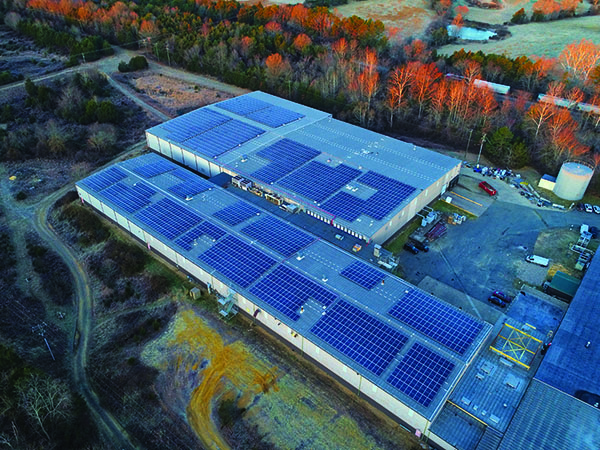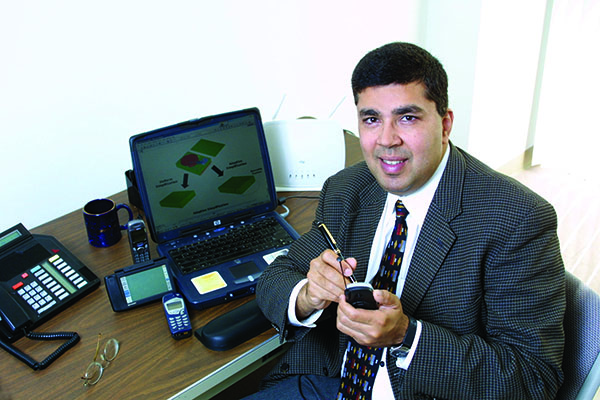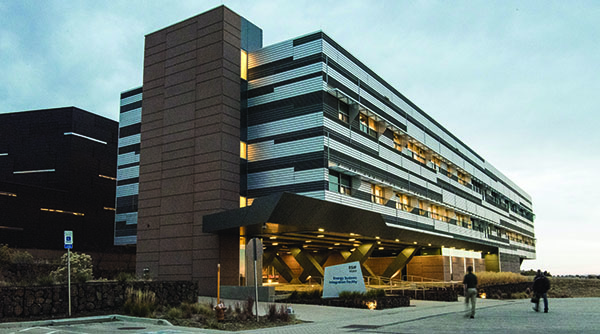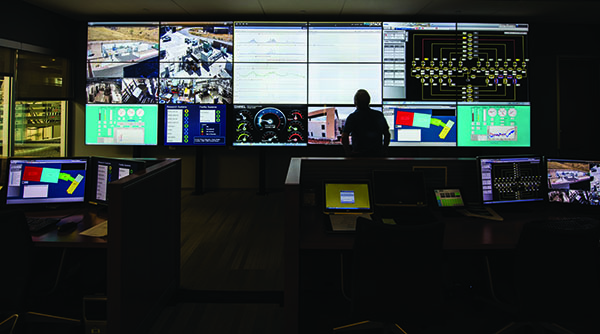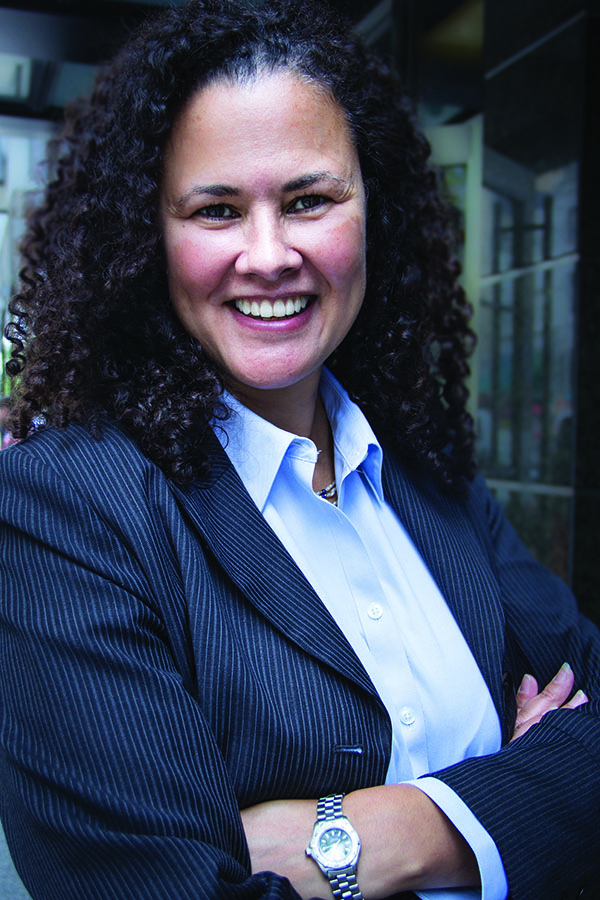Distributed Energy Resources Bring Benefits, Challenges and New Opportunities
Distributed energy resources have changed the power generation sector, disrupting traditional markets and distribution models. Those working in the field tell POWER that research and development will continue as part of the evolving landscape for solar, wind, battery storage, and other new energy technologies, even in a changing regulatory environment.
The advent of distributed energy resources (DERs) is changing the way power is generated and transmitted to the electric grid. DERs, the smaller power sources that can be used individually or aggregated to serve the grid, have paved the way for a two-way flow of energy and allowed the incorporation of new, connected technologies for power generation.
While much has been said about the potential threat DERs pose to regulated utilities, due to the specter—and the reality—of lost customers and revenue, these resources also offer opportunities.
DERs are both physical and virtual assets that can be deployed across the grid. They are often close to load, and typically behind the meter—such as a residential or commercial rooftop solar installation, or wind turbine serving a single household or an industrial facility. The movement toward an integrated grid, with efficiency and consumption working together for mutual benefit, is advancing rapidly. Big data is playing an important role, allowing the flow of information among multiple parties, facilitating dynamic adjustments to real-time market and operational conditions, and promoting efficiencies for transmission and distribution networks.
DER technologies—such as solar arrays, wind turbines (Figure 1), microgrids, combined heat and power systems, backup generation, and energy storage—bring with them a host of challenges along with benefits. The challenges include the threat to utilities from reductions in revenue, as the amount of electricity generated by power plants lessens while the plants’ operating utilities still must invest in the infrastructure to maintain the grid. There also are questions of reliability and resiliency in a move away from baseload power sources.
The benefits include cost savings to customers, a reduction in emissions in the move away from fossil fuel-generated power, and more control by consumers of their own power. Companies are finding opportunities to invest not only in generation such as solar and wind, but also in areas such as battery storage, software, market design, operations, oversight, and more. And utilities are looking at ways to capture those opportunities with their own products and services, part of the challenge of offsetting lost revenue from lower electricity prices and changing market structures as they look to recoup the costs they incur from wider deployment of DER technologies.
Policy, Technology, and a New Industry Reality
DERs have proliferated thanks to rapid advancements in technology, along with policies aimed at increasing the use of renewable energy, particularly solar and wind generation. But the picture is not always bright, and there are headwinds.
“The current regulatory environment for regulated utilities doesn’t support the new business model, incorporating distributed energy [onto the grid],” said Peter Bryant, managing partner of Clareo, a Chicago-based business consultancy that often works with energy companies, in an interview with POWER. “The financial reward model is not conducive to regulated utilities pushing distributed energy.
“It’s almost an experiment,” Bryant (Figure 2) continued. “How do you encourage residential solar, when you’re responsible for maintaining the grid infrastructure for all [customers], but now you’re encouraging people to get off the grid? I’m not sure it’s advantageous to the utility.”
Bryant noted generators such as NRG and Exelon have spun off distributed energy subsidiaries in an effort to separate those efforts from their traditional generation business. It’s a strategy more generators may look to employ.
“We’re seeing it already, with regulated utilities creating holding companies, in order to create a commercial company outside the regulated utility to take advantage of these opportunities,” Bryant said. “As we saw with NRG, investors are risk-averse, they do not want to support a program that brings a reduction in their dividend and share value. It’s a tricky environment to be in.”
“There is a lot of utility interest in working with companies like ours to effectively meet customer needs,” Vikram Aggarwal, CEO of EnergySage, a Boston, Massachusetts-based company supported by several entities including the U.S. Department of Energy (DOE), told POWER. EnergySage helps match customers who want solar power with installers and providers. “Customers want choice, and utilities are realizing they can provide the transparent information to get more revenue from customers,” rather than having those customers look elsewhere to buy solar. “Utilities are saying, ‘Why not buy those products and services through us?’ ”
Aggarwal (Figure 3), whose company is doing business in more than 30 states, said, “Utilities and power producers are realizing that solar and solar-plus-storage is disrupting their business, affecting their revenue and margins. These trends are making the utilities realize they need to jump in to help customers, maybe monetize the transaction by financing the purchase. They’re realizing the customer is going to spend thousands of dollars on energy services, heating and cooling systems, EV [electric vehicle] charging stations. We’re hearing from utilities that they would like to become the procurement channel for a whole suite of energy products and services.”
Matt Stoutenberg, the founder and president of Peak Power Solutions, a Costa Mesa, California-based solar system installation company, told POWER the DER landscape is in flux and plenty more changes are in store, particularly for solar, which according to the DOE’s Office of Energy Efficiency and Renewable Energy has about 30 GW of installed generation capacity in the U.S.
“[Solar] is always evolving,” said Stoutenberg, who has produced a series of videos on YouTube aimed at educating consumers about solar power. “It’s still the Wild West, but there is plenty of opportunity ahead. I think we’ll see the barriers of utilities start to come down. I definitely think the [residential] lease and power purchase agreements, utilities can assume those assets. The utilities have deep pockets. Why wouldn’t Southern California Edison (SCE) want to buy those assets?”
The analysts and experts who spoke with POWER agreed that the changing regulatory environment regarding subsidies and credits for renewable sources, along with the possibility of new pricing structures for electricity markets, could cloud the picture moving forward, but is not likely to stop the advancement of new energy technologies.
“The energy landscape is dynamic, especially now,” Devin Welch, a partner at Charlottesville, Virginia-based Sun Tribe Solar, which develops and delivers solar projects for commercial and government clients (Figure 4), told POWER. “New opportunities are constantly emerging as the regulatory frameworks that underpin the energy economy are being rewritten to reflect a new reality: renewable sources are less expensive than traditional generation.”
California Group Works with Local Utilities
Several groups are working on the technology side of DERs, including the National Renewable Energy Laboratory (NREL) in Golden, Colorado, the Electric Power Research Institute (EPRI) in Palo Alto, California, and the Smart Grid Energy Research Center (SMERC) at the University of California, Los Angeles (UCLA). The continuing research has brought the opportunity for groups to engage with local utilities; SMERC has two test sites in conjunction with utilities in the Los Angeles area.
“We are working on several research topics and projects,” Rajit Gadh, professor of environmental engineering at UCLA, and director of SMERC, told POWER. “One of the significant ones combines solar, electric vehicles, and battery energy storage to create a controllable microgrid with grid support functions, to help the grid operator while simultaneously providing value to the commercial customer of the utility.”
Gadh (Figure 5) said his group is working with SCE in Santa Monica and the Los Angeles Department of Water and Power (LADWP) on UCLA’s Westwood campus. “The first site is an active project funded by the California Energy Commission and the second one started with the DOE-funded, $120 million smart grid demonstration project to LADWP, which UCLA participated in,” Gadh said. “[At UCLA] we have created a living lab testbed, which has expanded its research and testing capability. Working in the territories of these two different utilities, one being an investor-owned utility (SCE) and the other being a municipal utility (LADWP), allows us to understand better how to scale up this research to different types of utilities.”
Gadh talked about how his group’s research in part is designed to help utilities deal with the challenge of integrating renewable energy sources into the grid, particularly the issue of intermittency from solar and wind.
“Often such variability of power results not only in fluctuations of power on the grid, but also fluctuations of voltage, thereby destabilizing the entire grid,” Gadh said. “To overcome these challenges, labs such as ours are working on taking the prediction of energy production via these intermittent sources and feeding them into a real-time dynamic planning and control software system, to determine exactly when and how much power to feed from the battery into the grid during times of power shortage and in reverse during times of excess generation.
“These software-based algorithms rely on big data gathered from the site, from the real-time information feeds from the electric utilities, from real-time energy generation and consumption via dynamic sensor data, and a host of other information to make decisions second-by-second on what control signal should be sent to the battery, and sometimes to the site host, and in cases of emergency even to the grid operators.”
NREL Campus Includes Dedicated DER Building
NREL, the government-owned, contractor-operated facility funded by the DOE, has an entire facility on its Colorado campus—the 182,500-square-foot Energy Systems Integration Facility (ESIF)—dedicated to research on how DERs can best integrate with the larger grid. NREL is the principal research laboratory for the DOE’s Office of Energy Efficiency and Renewable Energy. It also conducts research for DOE’s Office of Science and Office of Electricity Delivery and Energy Reliability.
Martha Symko-Davies, laboratory program manager in the Energy Systems Integration group at NREL, told POWER in an email that “Central to the mission of the ESIF (Figure 6) is to explore new areas of research that push the boundaries for systems integration beyond conventional thinking. Two recent High Impact integrated projects included efforts with Southern California Gas, looking at a new way to convert excess generation from renewable sources into methane gas that can be stored and transported through our existing gas infrastructure.”
Symko-Davies said NREL also is working with Panasonic, Xcel Energy, and Fullenweider, a commercial real estate developer, to help “developers, manufacturers, and utilities understand the interrelationships of energy use between buildings, transportation and generation so that they can build communities that are clean, sustainable and ‘smart.’ ” She said NREL also recently completed a project with Hawaiian Electric Co. “to understand the impact of very high levels of distributed and renewable energy systems integrated with electric power systems. Hawaii is one of the locations in the United States that is experiencing a tremendous boom in the number of installed solar systems. Work at the ESIF has demonstrated how these systems can be used to improve the stability of the grid when advanced inverter controls are added and used.”
The challenge of integrating renewable energy sources into the grid is another area of NREL research (Figure 7). Murali Baggu, manager of NREL’s Power Systems Operations and Control Group, in an email to POWER said, “Integrating variable renewable energy such as wind and solar bring unique problems when integrating into electric power systems. Modern wind turbines and solar photovoltaic (PV) systems introduce much faster power dynamics and potentially stress voltage control devices to the point of premature failure. Researchers at NREL are developing advanced inverters—devices that convert direct current solar power into alternating current power for the grid—that have features that could be used to help control voltage and make the grid more stable.”
Baggu also noted the importance of software in grid integration. “In addition to the hardware of the renewable sources, the software that controls the grid needs to be updated to address these integration concerns,” Baggu said. “Voltage problems and power quality issues are two main challenges in distribution systems associated with increasing solar grid integration.”
EPRI Studying Energy Storage
EPRI is at the forefront of research into energy storage, which many experts and analysts agree is the biggest piece of the DER puzzle. Ben Kaun, program manager for Energy Storage; Angela Chuang, senior technical leader for Energy Utilization; and Haresh Kamath, senior program manager for Energy Utilization, answered questions via email for POWER about EPRI’s work, discussing how energy storage systems can be improved in terms of lower costs and longer life.
“The answer depends on the technology,” they wrote, “but generally lower costs result in large part to scale of deployment and supply chain scale-up efficiencies. Additionally, costs of Li-ion systems continue to fall due to increases in energy density [energy per-unit volume stored] and specific energy [energy per-unit mass]. This increase in density results in lower ratios of inactive materials for the system.
“Another major opportunity for cost reductions is the potential to lower the ‘soft costs’ of integration. Currently electric utilities have an opportunity to enact standard processes for energy storage lifecycle management, including modeling or integrating energy storage systems, O&M [operations and maintenance], and decommissioning,” they wrote. “There are also significant opportunities to collaborate and understand best practices, and learn by doing.”
The EPRI group noted testing continues on energy storage systems, with an eye toward future technologies. “EPRI continuously monitors the technology landscape to identify and investigate better ways to store energy,” the researchers wrote. “Flow batteries, including vanadium redox and zinc bromine, are of interest due to their potential for long-duration scalability with relatively low incremental cost of added electrolyte. There are also a variety of non-battery technologies that may be valuable in future applications.”
The researchers also are looking at how utilities can pivot to recognize the benefits of DERs, even as renewable sources disrupt their traditional business model. “If a utility has internal or regulatory-imposed targets for renewable energy generation, then energy storage and other flexibility measures, such as advanced inverters, and flexible demand response resources, can support engagement from all parties—customers, utilities, and third parties—to be part of the solution to mitigate cost or reliability impacts, and enhance the value of delivered renewable energy,” they wrote.
Storage and EVs: Developing Management Control Systems
Energy storage, as the EPRI researchers and other experts noted, is looked at as the next wave of technology advancements, with the potential for further disruption of the power landscape.
David Corbus, the wind grid integration lead at NREL, told POWER in an email: “Cost and lifetime are critical aspects for energy storage. While the U.S. has a large amount of installed generation capacity now, we have a large amount of capacity that will retire over the next few decades. In addition, storage costs are continuing to fall. At some point, it appears that the lifecycle cost of energy storage will compete with a combustion turbine, especially if it can receive a significant capacity credit. Currently there is a trend towards starting to plan for energy storage as a peaking resource, and this trend should continue, especially in regions with high renewable energy deployment.”
Kelly Speakes-Backman, CEO of the Washington, D.C.-based Energy Storage Association (ESA), wrote to POWER about how technology is advancing storage techniques. “One of the most exciting technological developments in distributed energy storage is the use of advanced controls and artificial intelligence,” she said. “Distributed storage promises enormous value to the electric system and to improving resilience.”
Speakes-Backman (Figure 8) said there is much discussion about energy storage systems still in their infancy. “Some companies are convinced that long-duration storage—days, weeks, or even months of storage—will be valuable in a higher-renewables future, and the solution most folks are focused on is ‘hydrogen storage,’ [that is], power-to-gas. While power-to-gas is technologically proven, there are still challenges. Beyond technological maturation issues is whether there will be a mechanism to establish a premium for such long-duration storage, since conventional fuel-based generation is based on providing that value today much more cheaply. That said, I’m not sure anyone can tell you exactly what the electric system will look like in two decades; this is a time of enormous innovation and change.”
And then there’s the question of electric vehicles (EV), and how wider adoption fits into future energy needs and distribution. Said Speakes-Backman: “The wild card in this discussion is vehicles—as EV shares increase, a whole new set of mobile distributed storage assets will enter the grid and involve transportation system needs, not just electric system needs. Sophisticated control systems will be critical to optimizing all these storage assets coming online.”
Annabelle Pratt, a principal engineer in the Power Systems Engineering Center at NREL, told POWERin an email: “NREL has developed tools to assess the amount of flexibility that buildings—with a focus on commercial building stock—can provide to the bulk power system while maintaining occupant comfort. NREL is also working on analyses of the impacts of advanced consumer technologies, including smart thermostats, electric vehicles and home energy management systems, on the operation of distribution systems.
“NREL works—independently and in collaboration with federal entities and manufacturers—on developing advanced control algorithms to manage both distributed energy resources and loads in residential and commercial buildings to showcase the full potential of such energy management control systems. We have also developed a hardware/software test bed for smart homes that can be used by utilities and manufacturers to evaluate and demonstrate the performance of advanced technologies and their impact on the power grid.”
Looking Ahead
The future of DERs, as all the people POWER spoke with noted, is wide open.
Said Clareo’s Bryant: “You see a lot of companies going to commercial microgrids, and you’re going to see more, particularly as [energy] storage comes down in price. You’re going to likely see a peer-to-peer microgrid world, all enabled by blockchain, where one company says to another, ‘I’ve got excess power that I can sell to you.’ ”
“The really interesting [thing] for the future is in dispatchable assets,” Amy Simpkins, CEO of muGrid Analytics, a Colorado-based company that helps clients who invest in renewable energy, told POWER. “Solar has come of age in the last 10 years. Storage today is where solar was 10 years ago. The dispatchability aspect introduces a whole new level of complexity. What we’re looking at is control of those assets. From the utility side, meeting peak loads, predictive analytics. With solar, there is some predictive analytics, such as when is the weather going to be bad.
“Simple net metering was designed for small residential customers. Net metering is phasing out, with the complex marketplace. New York [state] is totally getting out of net metering, moving to VDER [value of DERs],” with a VDER Value Stack Calculator, developed to provide an accurate estimate of a PV project’s compensation under the Value Stack. ‘‘We’re doing a project behind the meter in Ohio, [in] the PJM market, [where] our customer is looking at targeting peak hours, peak demand, to put energy back on the grid. Focusing on the day-ahead market, putting predictive analytics to work.”
“All of this [is] in flux,” said EnergySage’s Aggarwal. “While the electric grid still supplies the majority of demand from centralized power grids, new technology is changing the ‘balance of power’ and injecting complexity—and opportunity—into what used to be a relatively staid industry. We are moving toward an integrated grid, where consumption and efficiency can work together to generate savings and benefits; where electricity and information flow freely between multiple parties; and where demand is not passive, but informed by big data and capable of dynamically adjusting to real-time market and operational conditions.”
“The thing that’s going to play in the next few years is resiliency,” said Simpkins. “It’s just going to continue, with these several weather events, as our energy economy becomes more based on non-fossil fuels. We don’t have a great way to codify resiliency from an economic standpoint. No one really knows how to assign a value to that.
“It’s a huge issue for the grid to be able to provide reliable power in the event of an emergency,” Simpkins continued. “We’re all trying to get our arms around it. Resiliency is coming to the forefront as a priority, it’s no longer a bonus. It’s important to keep the conversation going around resiliency. It’s an exciting time to talk about a problem when you have no idea what the answer is.” ■
—Darrell Proctor is an associate editor with POWER magazine.



